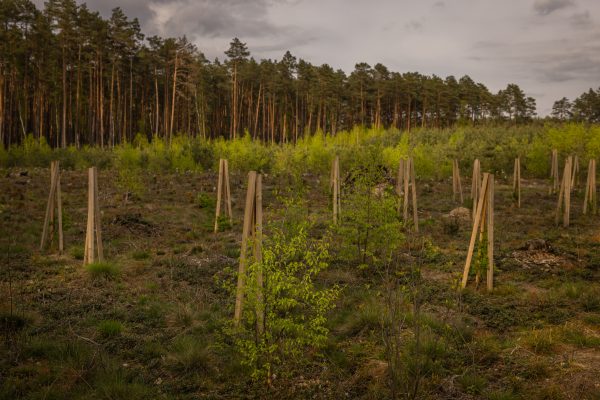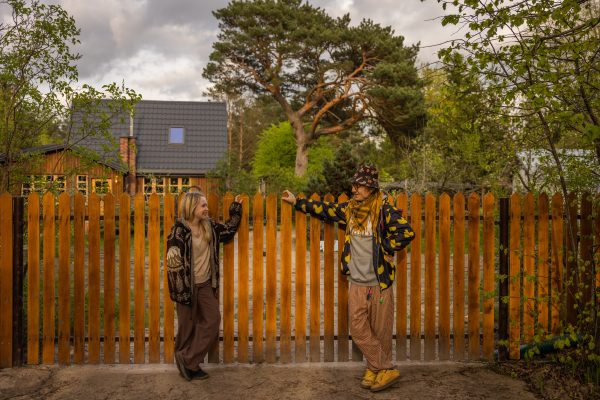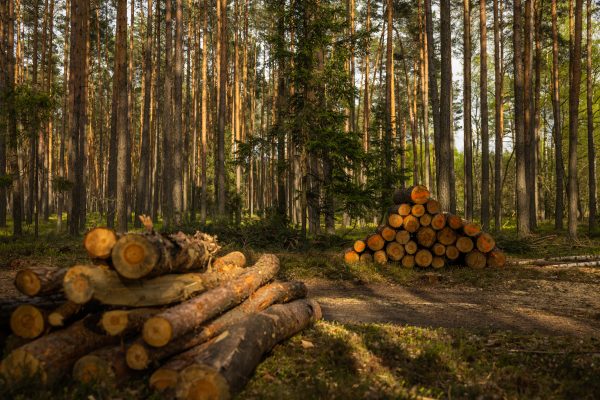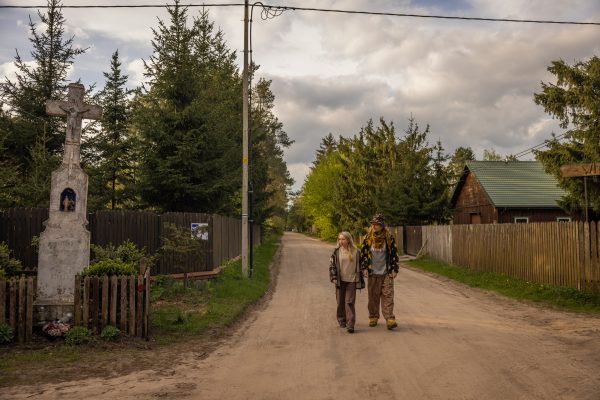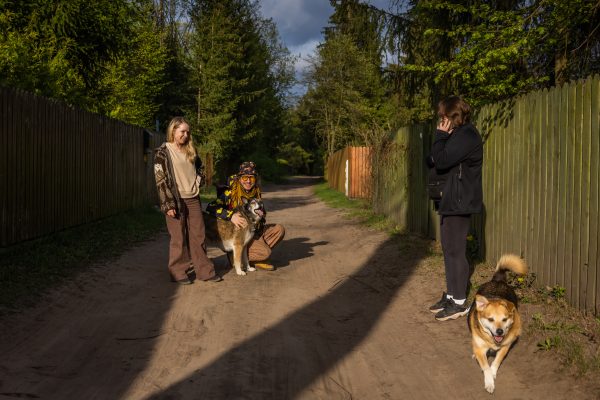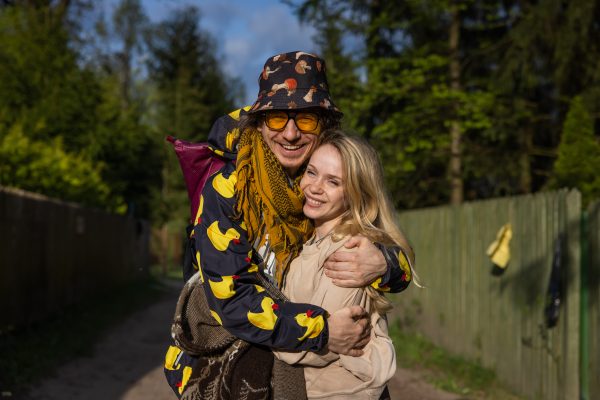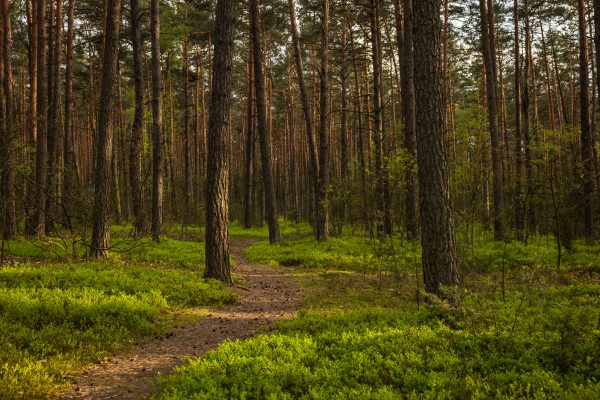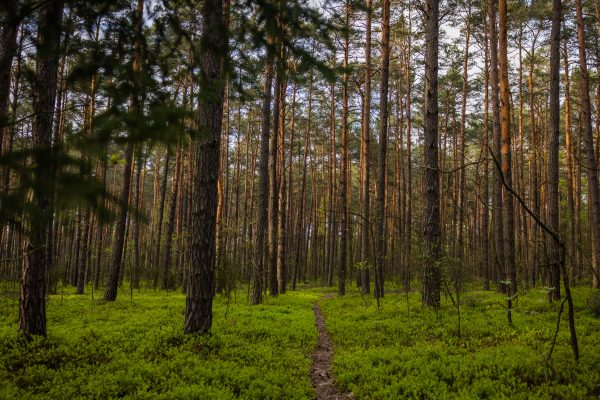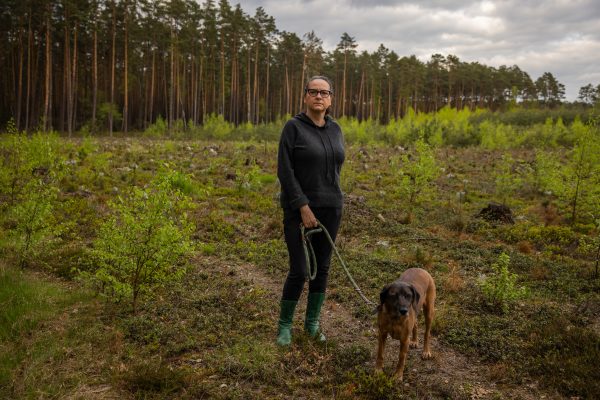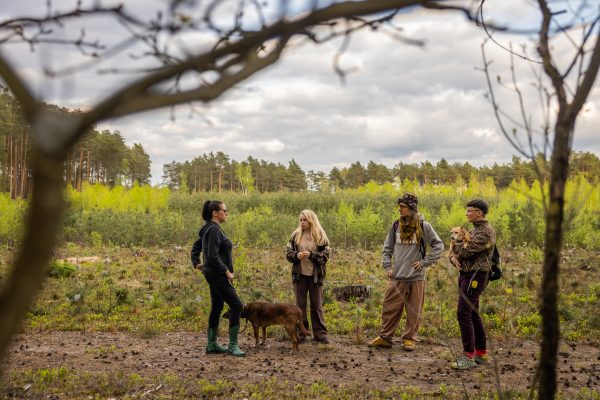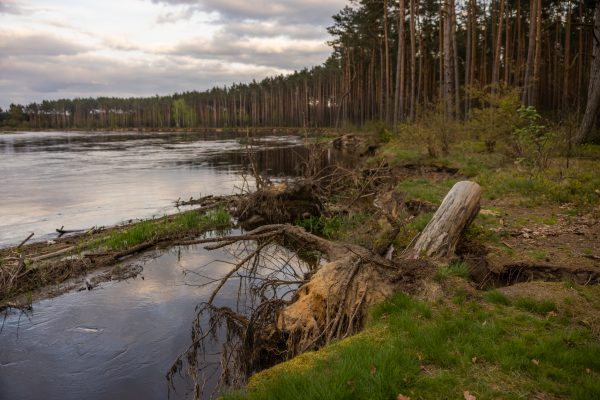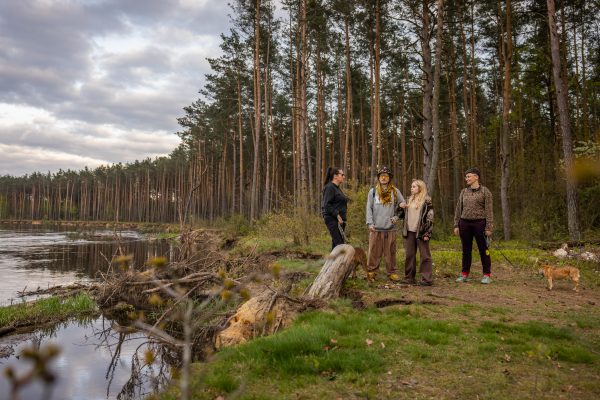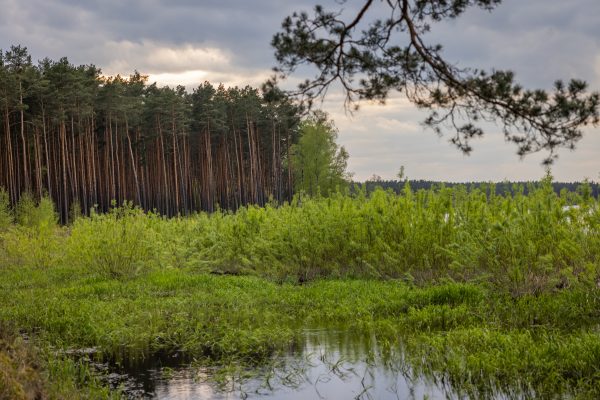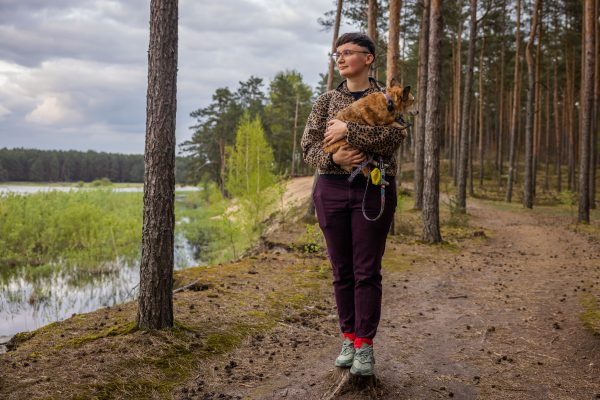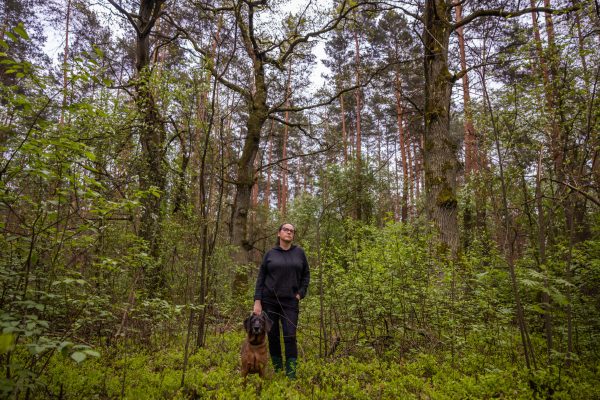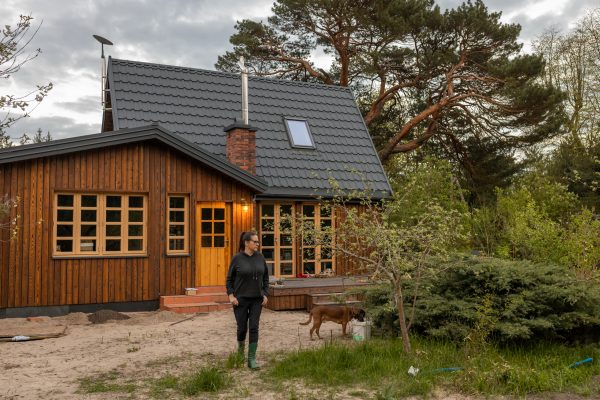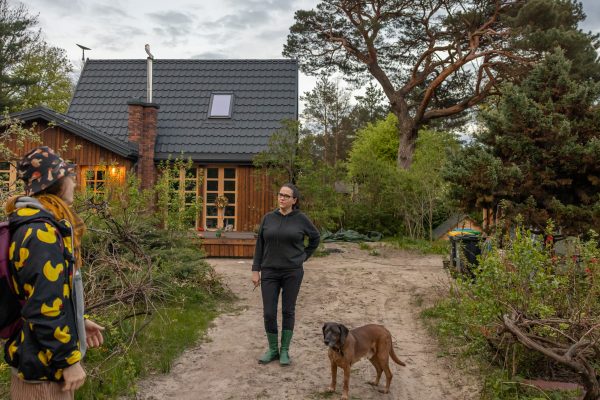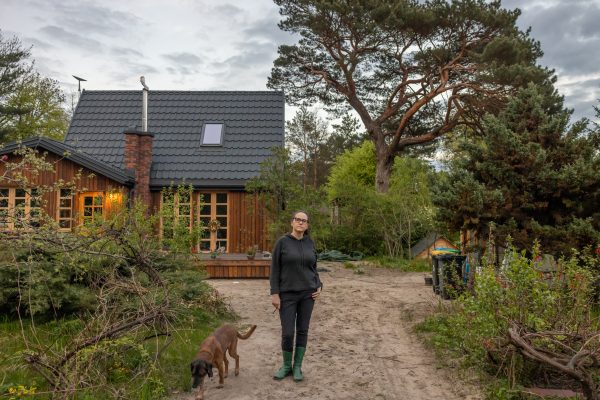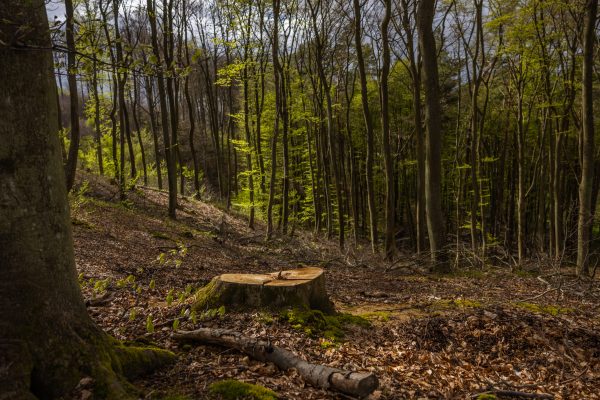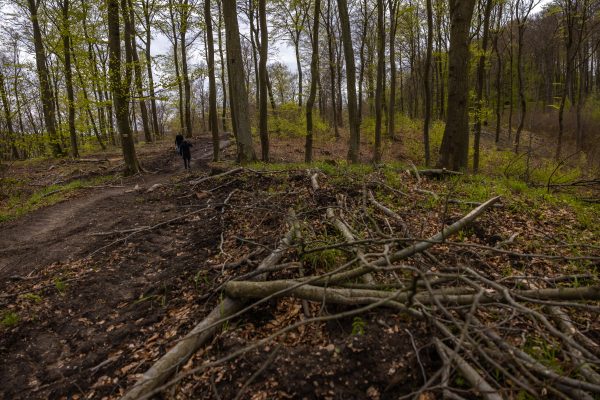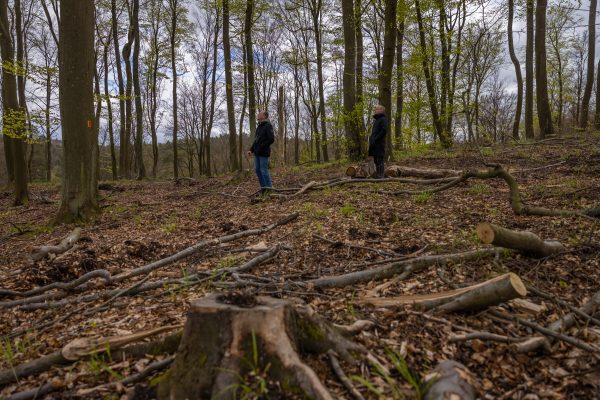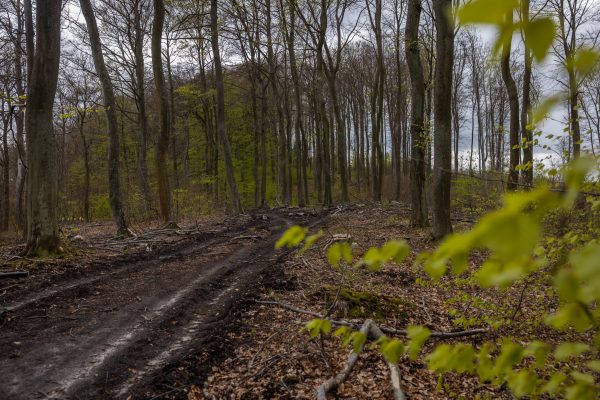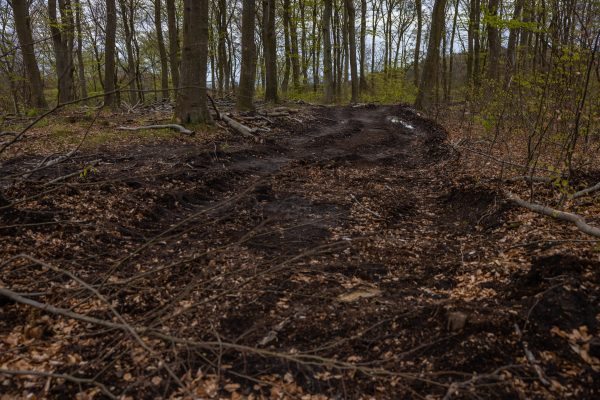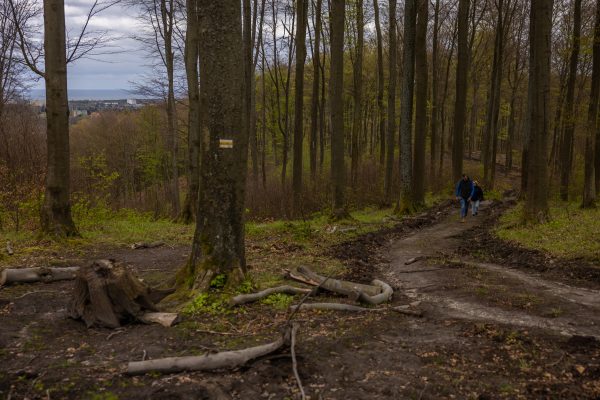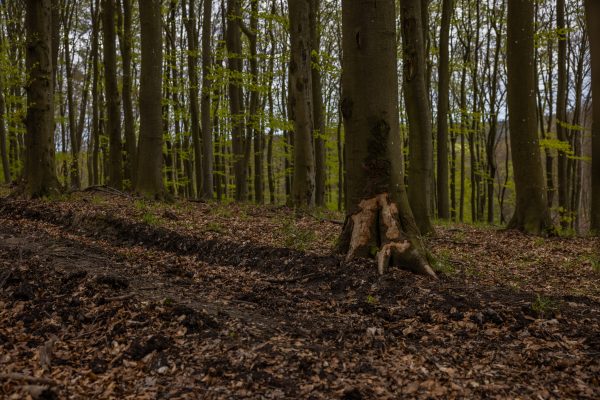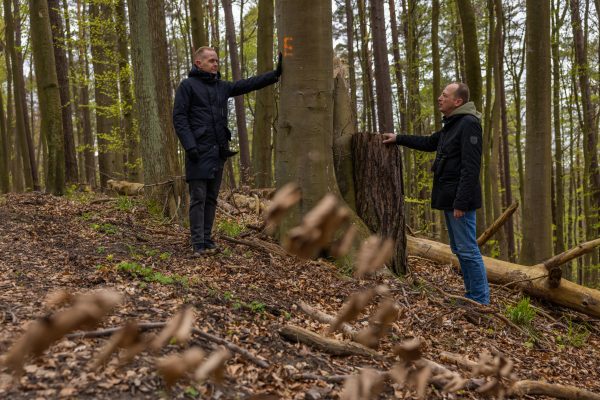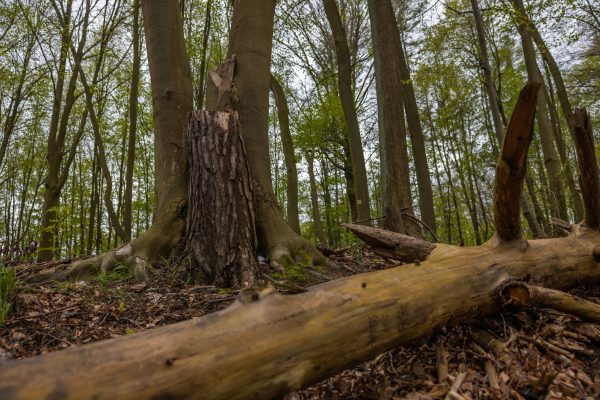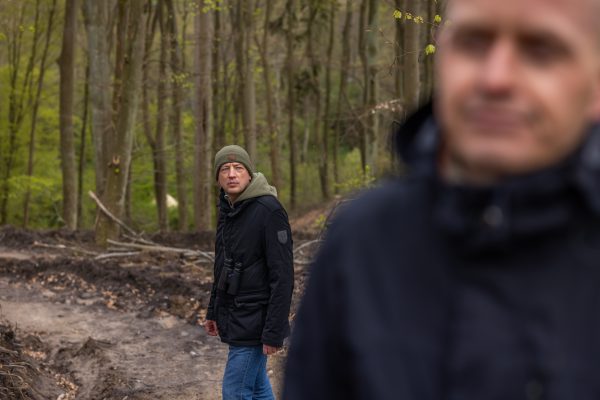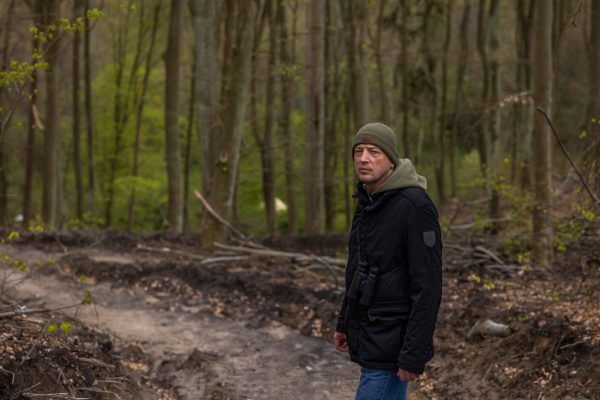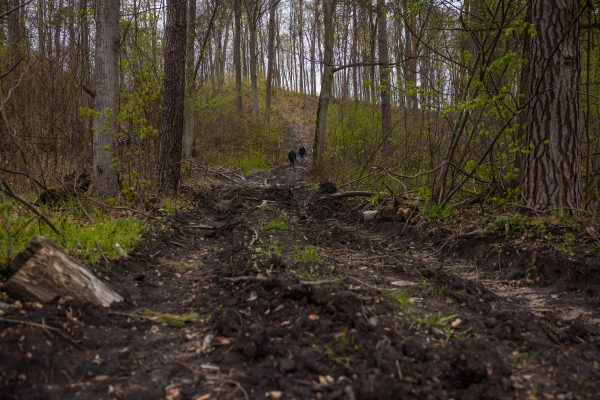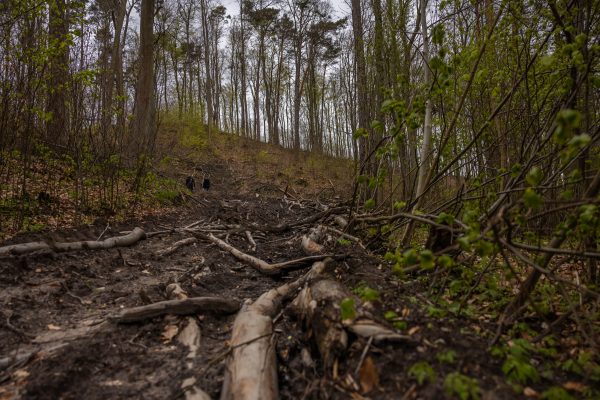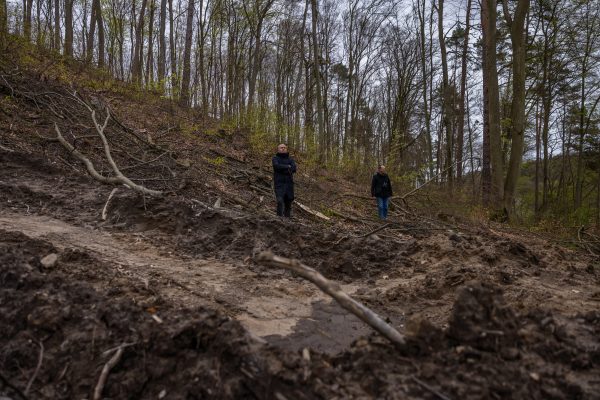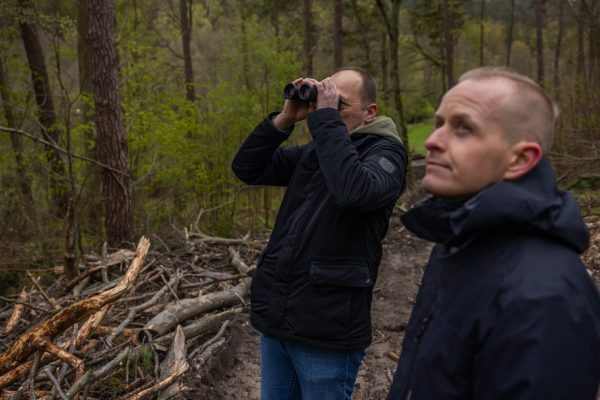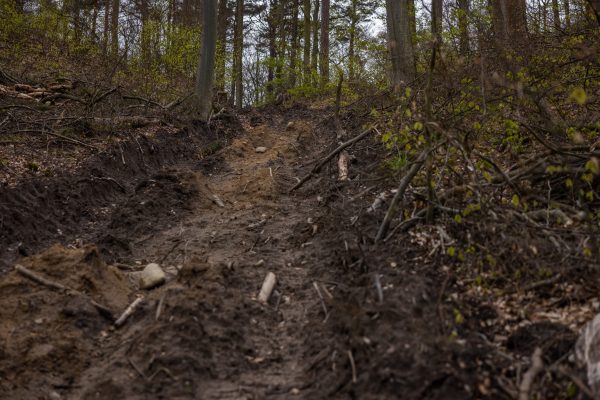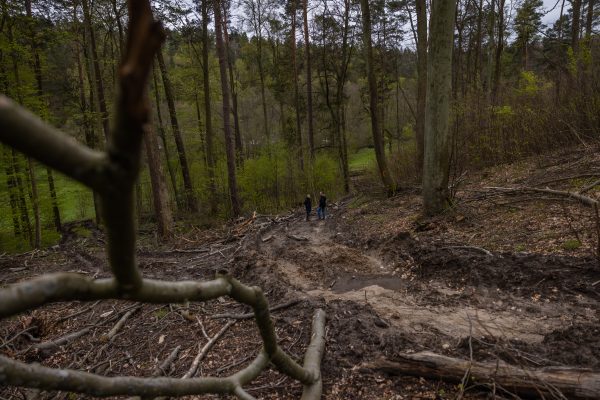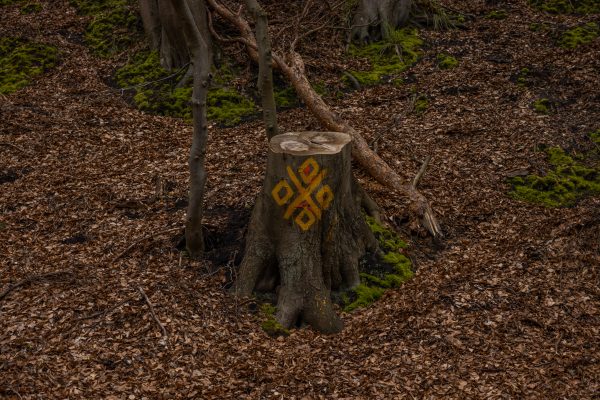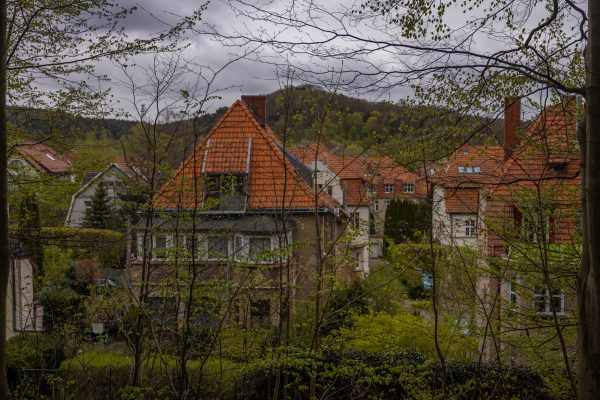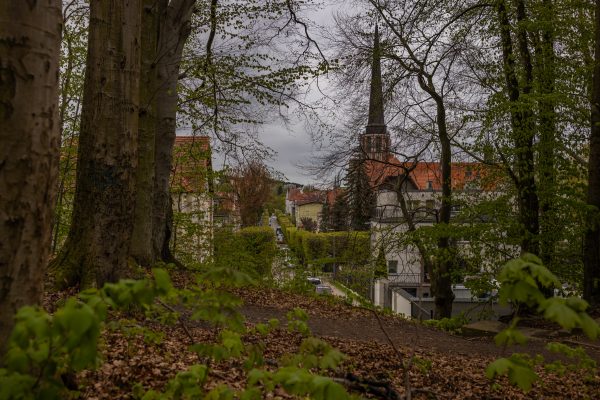
Once upon a time, there was only ice here. It had a tight grip on the land here for one hundred thousand years, together with Scandinavia, the British Isles, and part of what is today Germany. It was not until it got warmer that the land ice began to recede from Pomorze towards the north. It shifted idly, at a geological pace, which means for several tens of thousands of years, carving out valleys, forming hills, and filling lakes on the way, creating a unique landscape referred to by scientists as post-glacial.
Later, the forest emerged. Initially, it was as low as the Siberian Tundra, but as the climate warmed up there were more and more trees. At the edges, there were beach and oak trees growing, and mushrooms and lichen emerged; lobelia bloomed by the lakes, and a layer of moss formed over the peat land.
Today, the Tri-city Landscape Park (TPK) spans almost 20 000 hectares, ten nature reserves, and three Natura 2000 areas. It is home to 160 species of birds and 850 species of plants. – Some of these are endemic. They are usually found only in the mountains – says Paweł Szutowicz, a lawyer and activist in Koalicja Las Jest Nasz (the Forest is Ours Coalition). Because the Tri-city Landscape Park is unique: due to being formed on post-glacial moraine, it has a specific microclimate, and the tree stand is similar to that in the mountains.
– Recently, we even came across mun mushrooms – Michał Kamelski adds, and opens a photograph of the characteristic pink caps on his phone.
In his daily life, Paweł is lawyer at a law firm, and Michał is an engineer. They are united in their opposition to what is happening in the forest.
– I went out to go for a run, and came back angry – Michał says – Each year, more and more trees are being cut down, and the trails destroyed by heavy equipment. Last year, I strayed from my route a little, and ran into a coppice deep within the forest, and there a lot of trees had been cut down, and plant litter had been destroyed. I remember the physical pain, as if I had lost a loved one. I went home and started looking online for activists to join.
Paweł studies nature and does bird-watching for a hobby. He has been to all of the national parks in Poland and is involved in protecting endangered species. He has been active in the forest movement for three years. – I grew up in Stara Oliwa, which is a protected quarter next to the forest – he says. – On Sundays, my Granddad would take me to Góra Schwabego. It was a magical place. We would walk along the walled mountain path, and you tipped your head back and couldn’t see the peak, just a wall of trees in front of you. But today? I go for a walk and find myself starting to look at the dots.
An orange dot on the bark is a mark showing that the tree has been designated to be cut down. It is the last moment to save it.
Felling age
The TPK is owned almost entirely by the Gdańsk Forest District. It is estimated that more than 100 000 cubic metres of wood leaves the park each year. The rate of tree felling has increased in recent years, activists say, and the problem is not only affecting the Tri-city. Forests are being cut down all over Poland. According to the Statistics Office (GUS), over the last thirty years, the amount of wood obtained per year by the State Forest Authority has more than doubled.
foresters respond that cutting down trees is necessary. Firstly, to rejuvenate the forest. Secondly, to allow light to reach the youngest trees, which are growing in the shadow of more mature specimens.
– As if the forest – Michał says– did not manage for thousands of years without the foresters. and would not be able to continue living without those contrived procedures.
– Recently, a high-ranking forester explained to me that as in the city, in the forest there has to be room for both the elderly and for children – Paweł adds. – I replied that according to my knowledge the process in which trees grow is different to development of homo sapiens. There are no arguments based on nature for why a beech capable of living 400 years needs to be cut down at the age of 120 years. If we must make a comparison with humans, then it is still quite young, at around 38. I am over forty, so you could say that I am now over the felling age.
Why do trees in the prime of their life get chopped down? Activists say that there is only one reason, and that is money. – At a certain point, a tree like that, to put it in very simple terms, ceases growing upwards and starts expanding outwards. The quality of the wood changes, and keeping trees to allow them to grow is no longer economically viable, i.e. they are no longer suitable for making good board.
Tenderexcavator
“80 percent of forests in Poland are state property, and 75 percent of the public would like to see the area in which trees are cut down reduced. Under Polish law, however, the voice of the public concerning management of state forests can be disregarded” – activists from Fundacja Lasy i Obywatele (Forests and Citizens) say on their website. The founder, Marta Jagusztyn, has been advising on how to combat felling of trees for years.
– It all started five years ago – she says. – In Szumin, where I live, the news reached us that the forest next to the village itself would be cut down, and this would be complete felling, right down to the ground.
Szumin is on the Bug river, an hour’s drive from Warsaw; on one side it is surrounded by a pine forest, and on the other riverside meadows. Most of the houses are holiday homes for people who need a break from the city. – We were ready to fight for our forest, but it was just that no one knew anything. Where would the felling take place, and according to what rules? Everywhere we were being told that nothing could be done.
For many years, Marta worked as a coordinator of development projects in countries in Asia and Africa. If people try to fight for their rights in China, she thought, then surely that can be done in democratic Poland. The research took her a good month. She found out what was meant by complete and partial felling, how to read the PUL (Forest Management Plan), and that there is something known as the Aarhus Convention, under which members of the public have a right to information and to play a part in decision-making with regard to environmental protection.
– Soon, at the weekends, I would constantly be on the phone – she says. – People would call from all over Poland who had heard of Szumin and wanted advice on saving the local forest.
Thus was created the Fundacja Lasy i Obywatelki (or Obywatele, because the feminine and masculine forms are used interchangeably), uniting forest activists from the entire country and giving them a means of taking action.
Marta says that one of the biggest problems is gaining access to information about forests. In recent years, the State Forest Authority has been reluctant to disclose a lot of important data, including felling planned for the current year, even though theoretically it is required to do so under regulations such as the Aarhus Convention already mentioned (Poland ratified the Convention in 2003). – Information in the PUL (Forest Management Plan) is available. Every forest district is required to produce the PUL. Except that the PUL is produced ten years in advance. The PUL does not say when precisely felling will take place in our forest.
To obtain that information, activists at the foundation began to track tenders. Marta explains further that every forest district is required by law to announce tenders for work planned in the forest in the following year. – The problem is that there are 429 forest districts in Poland, which means that we would have to wade through documentation for 429 tenders. That was two months’ work. To help with the transfer of data, our IT technicians wrote a special programme, called the Przetargozgryzaka (Tenderexcavator)
The data obtained was used to create an interactive map showing tree felling throughout Poland. It is called “Zanim wytną Twój las” (Before they cut down your forest) and it is available on the foundation’s website. All you have to do is locate the nearest forest on the map, and when you click on it a window opens saying what plans foresters have in that area.
– A huge row broke out. The State Forest Authority accused us of manipulating information, and even objected to the colour red used to indicate tree felling – Marta says. – At one point, the guy responsible for maintaining the site called me and said that we were being hacked. It transpired that in the first week, 100 000 people tried to get on to the site, and it was not an attack at all: all of those people truly rushed to find out whether the nearest forest would be cut down.
60 cases won
Two years ago, Marta Jagusztyn travelled around Poland to teach others how to get organised to defend forests. One of the places was Głuszyca pod Wałbrzychem, where wells began to go dry because of tree felling, and Sopot, where the voivode, who was appointed by PiS, had rejected the TPK Protection Plan, which it had taken a few years to produce. The project “Lasy są wspólne – obywatele mogą decydować” (the forests are common property, the public can decide) was supported using financing under the Active Citizens programme.
– Five years ago, when we started, we intervened thirty times throughout Poland in cases concerning forests – Marta says. – Since that time, we have found 450 different initiatives.
Why did Poles move to defend forests? Augustyn Mikos of the association Pracownia na rzecz Wszystkich Istot (Workshop for All Living Things), one of the oldest environmental organisations in Poland, says that there are several reasons. The first is that society is wealthier: when our fundamental needs are met, we can focus on other issues such as protecting the environment. The second is the case of the tree felling in the Bialowieza Forest, which resonated throughout Poland. The pandemic and resulting lockdown were also a factor. – When cities were closed down, people turned to nature, sometimes to the nearest site, such as a small forest near the city. They discovered that trees were being cut down in that small forest as well.
To join groups and people acting to save forests, activists from Fundacja Lasy i Obywatelki created an interactive map for the whole of Poland. Under the project, they produced a handbook for local government on how to fight tree felling in their area. For two years, they also collected information about all applications and comments that local communities had submitted to the State Forest Authority. – We encountered resistance in this matter as well. Forest districts were unwilling to release that information, under the pretext that this was not information about the environment – Marta says. – So, each time, we went to court. Today the count is more than sixty cases won.
What a chair is made of
After the meeting with Marta Jagusztyn in a library in Sopot, the Koalicja Las Jest Nasz was formed in the Tri-city. It was joined by local environmental organisations and CSOs, activists, and ordinary residents unhappy with the scale of tree felling. – We have a Facebook group of 600 people. On a daily basis, approximately thirty are active – Michał says.
For two years, they have been monitoring tenders held by the forest district and patrolling forests, observing the scale of the tree felling. They organise nature walks, happenings, and lobby local politicians.
– Last year, residents of a residential estate in Gdynia came to us, concerned that orange dots had appeared in their forest – Paweł recalls. – We carried out a review. Among us there are experts on ornithology and mycology, and persons who have qualifications in biology, so we went through the entire site, from one dot to the next. We found that a large number of biocenotic trees, that is trees of greater natural value because they can provide food or a home for other forest organisms, were designated to be cut down. For example hollow trees, with a lot of trunks and cracked bark.
The activists made notes and photographed every tree of that kind, and submitted the document to the forest district. A response was received six months later: the foresters had decided not to cut down valuable trees. – This was effective action, but on a small scale – Paweł summarises. – It is not possible to examine the entire TPK.
For this reason, the Koalicja wants the entire site of the TPK to be excluded from felling for commercial purposes. – We are not completely opposed to commercial use of forests – Michał emphasises. – In addition to forests of natural and community value, there should also be forests used for commerce. Wood is a raw material that it is not possible to stop using altogether, but in this regard too, they say, there is much to be done.
Paweł: – In discussions with foresters, a single question is always posed eventually: and what is that chair you are sitting on made of? Wood, of course, but the thing is that I bought that chair fifteen years ago and I am still using it. The problem is manufacture of furniture that is not durable and has to be thrown away after one year. How much furniture is recycled, and how much ends up in the furnace?
– Recently, I was able to buy a table made of recycled wood – Michał adds. – There are firms that do that, but there is no such thing as systemic recycling of wood in Poland.
This is not the only example of wastage of valuable raw materials. According to the Statistics Office (GUS), each year, five million cubic metres of wood goes to Polish power plants and combined heat and power plants. This is enough to fill 165 thousand trucks. Or five times the Warsaw National Stadium.
– 60 percent of wood taken from Polish forests is burnt – Augustyn Mikos of Pracownia na Rzecz Wszystkich Istot says.
Under the “Lasy są wspólne – obywatele mogą decydować” project, Pracownia activists monitored decisions made concerning forests at European level. An example? – Recently, the European Commission proposed raising the share of renewable energy in overall energy production. What has that got to do with forests? That it is important to know that in Poland and in the EU, most renewable energy is produced due to combustion of biomass, while some of that biomass is wood biomass, i.e. wood and wood by-products: wood chippings, shavings converted into pallets. The wood is burnt in a power plant, which charges additional fees at the same time for producing renewable energy.
– Which means that we are cutting down forests to counteract climate change?
– The argument is that trees grow back, after all. And the carbon dioxide generated in the combustion of trees is absorbed by the trees once again. Except that no one considers the timeline. If we cut down a one-hundred-year-old pine today, it will take one hundred years to grow back. This is why activists in forest movements throughout Europe are fighting to have wood removed from the list of renewable energy sources, if obtained specially for combustion purposes.
An end to the leaning beech
It was Saturday, and Paweł took the children to the zoo, which borders the TPK. He heard the rattle of chainsaws. A colleague who went to the site called to say that there was tree felling at Góra Schwabego. She was crying.
That tree felling could not be stopped, even though naturalists from Koalicja Las Jest Nasz sent a list of the biocenotic trees to the forest district. On the list was the “leaning beech”, a twenty-five-year-old of unusual beauty, with the trunk bent at a right angle. There was the “snail beech”, a thirty-year-old, with the beginnings of a hollow, in which naturalists found snails spending the winter.
The fight for the Szumin forest continues. The site of a black stork nest could not be saved, and the old conifer avenue was also cut down. – But a different part of the forest, the part closest to the village, is still alive – Marta says. – We tried various methods, and in the end filed a civil action against the State Forest Authority. The only case of this kind in Poland. The court issued an injunction protecting our forest, which means it cannot be cut down for the duration of the case.
In the autumn, before the parliamentary election, more than 290 organisations and community movements from all over Poland signed the Forest Manifesto. This lists ten demands for change to how forests are managed. These include exclusion of twenty percent of forests from commercial use, and for them to be returned to people and nature; cessation of combustion of wood in power plants; ensuring that the public have access to information about forests.
After the change of government, the new General Directorate of the State Forests released, for the first time, information about current felling to Fundacja Lasy i Obywatele.
In January, the new minister of Climate and Environment announced that tree felling would be stopped or restricted for six months in ten locations throughout Poland. The list includes the TPK, and Góra Schwabego.
Epilogue
Once upon a time, there was ice here, and then a forest grew. Humans were the last to appear in this story; the first human settlements discovered within the TPK date back to five thousand years B.C.
What next? “We have to save our forests so that they can save us”, scientists of the Polish Academy of Sciences Climate Committee wrote in a dramatic appeal, pointing out that in the fight against climate change, forests are a crucial ally: they absorb carbon dioxide from the atmosphere, reduce the effects of drought and floods, and provide shelter for city residents during heat waves.
– We continue to think that forests are dependent upon us – Marta Jagusztyn says, – but in fact we are equally dependent on them.
Project „Lasy są wspólne – obywatele mogą decydować” run by Stowarzyszenie Pracownia na rzecz Wszystkich Istot, Fundacja Lasy i Obywatele and Stowarzyszenie MODrzew was conducted using funds from the Active Citizens Fund – National Programme funded by Iceland, Liechtenstein and Norway using EEA Funds.
Text: Katarzyna Brejwo
Photo: Anna Liminowicz
The report was published on Newsweek and Onet.pl

